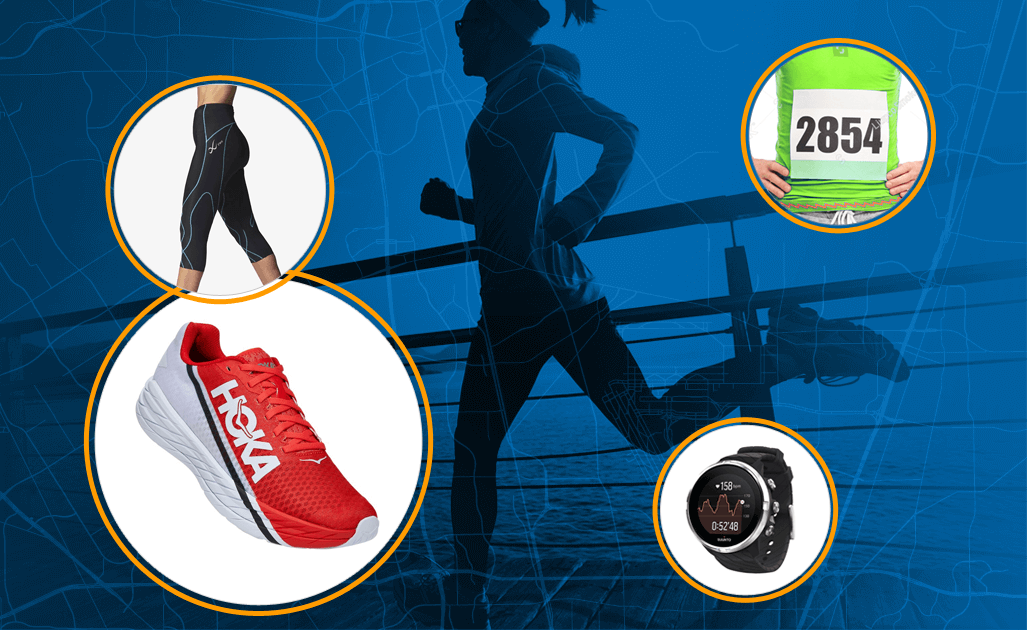What's your post-run recovery plan?
You know...
If you're looking for a post-run recovery routine to help you prevent injury, recover faster and keep going, keep reading.
In this article, runner Natalie Rizzo shows you what post-run recovery looks like with just 2 tools + 4 moves.
There may come a day when your runs might start running you down.
Here's a little piece of advice:
Running has always been integrated into my general fitness routine, I love the clarity I find while running and the accomplishment of moving my body for a set amount of time or distance.
Running started to beat me down when I turned 30. I know, I know, this sounds cliché, but although I am hitting PRs in my distance my body is in a bit more pain than it used to be.
Know the feeling?
Tuning into my body aches and then mindfully recognizing how to recover has improved my body and my mental state.
My connection to running dates back to joining the middle school cross country club and blossomed from there.
Although I pursued a plethora of sports, including playing Division I Volleyball, running has always been there for me when I needed to:
Currently, I am training for longer endurance triathlons and races which includes some tough interval running (and a newfound love for zone 2 running).
It didn't take long to find out that higher-volume training takes a bigger toll on the body, and I needed to find a way to recover faster.
If you're looking for a post-run recovery routine, keep reading to learn about the 2 tools and 4 moves I use.
And check out Natalie's WeeViews...
There are a multitude of benefits to making post-run recovery part of your training schedule, such as...
Of the endless choices of post-run recovery tools, I have found TWO essential pieces that complement each other well and help me stay fresh!
First up, I want to talk about foam rolling. I foam roll my back every day in the morning when I wake up and specific areas before and after my runs.
Chances are you have seen either a small or long foam roller sitting in the corner of your local gym, they are great for muscle recovery for all types of workouts.
Foam rollers can come in different densities depending on the amount of pain you want to endure… I mean the amount of pressure you prefer. 😂
Foam rolling is a self-myofascial release technique that uses pressure to alleviate muscle tightness and inflammation with numerous scientific studies discussing the benefits of incorporating foam rolling as a warm-up or recovery tool.
Foam rolling works by reducing muscle tension with the application of pressure which promotes blood circulation that can flush muscles from metabolic waste accumulated through exercise.
My second favorite recovery tool is a massage ball.
When I started experiencing minor foot pain from tendonitis, my physical therapist recommended a massage ball.
What's a massage ball?
Massage balls are great for targeting specific areas of muscle tension and are easy to bring with along when traveling.
Since they are smaller, it is important to practice applying light pressure and work up to what works for your body.
Over the past year with the increase in my endurance training I had a lot more aches and pains come up...
A few of which led me to a physical therapist just to be sure I did not have more serious injuries.
Luckily they all were minor bothers that could be treated with these recovery exercises.
😲It is astonishing how incorporating these exercises completely eliminated some tendonitis issues I experienced.
😲NOTE: Foam rolling saved my IT bands! I had 3 runs in a week that I ended early because of pain in my outer knee and along my IT band.
Check out these moves to for post-run recovery and relief...
Glutes:
👉This one is one of the best post-run recovery moves for runners.
Hamstrings:
👉Roll up and down your leg 10 times.
IT Bands:
👉Bonus: The insertion point of your IT band is where a lot of tightness is held. You can target this area by rotating your core to face the floor. You can pair this movement with the rolling to break up tightness in your hip area.
Quads:
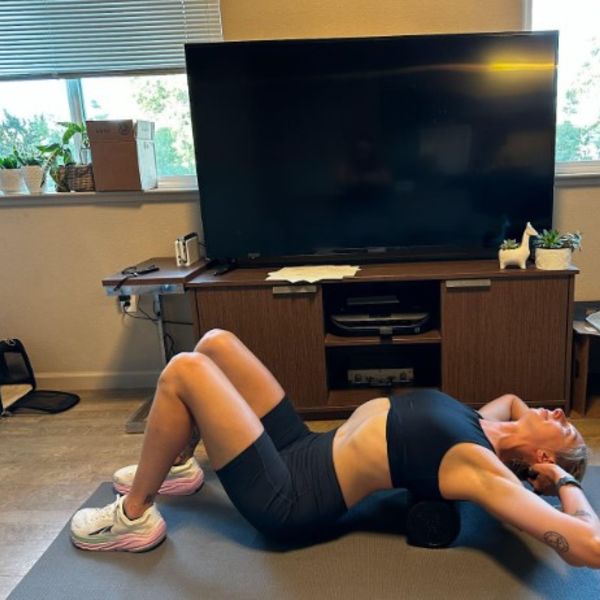
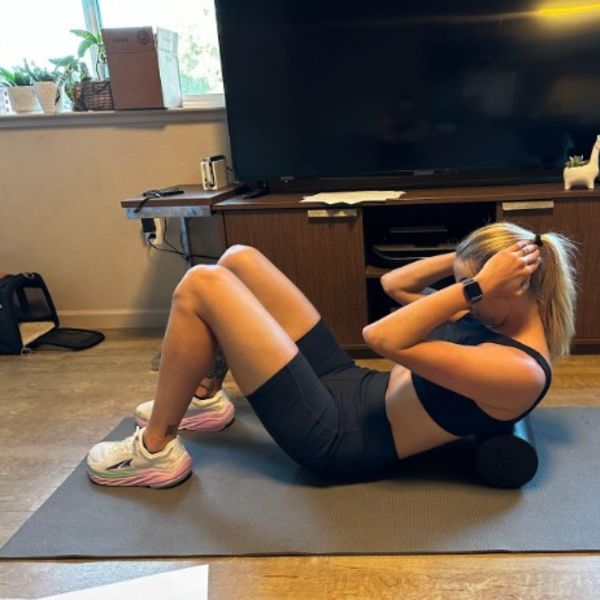
Stretch your back with this morning foam-roller routine.
Every morning as a part of my yoga stretching, I use the foam roller to open up my thoracic spine.
I sleep on my side which crunches my shoulders and makes me feel stiff so this is a great way to loosen up for the day.
Give this morning foam-rolling routine a try...
👉Do this 10 times or until your feel stretched!
This little ball might bring you to tears. But it can also release tension in some tight spots.
My physical therapist recommended using the massage ball to warm up and loosen up my foot muscles and tendons.
👉Please be extra mindful when you start the massage ball routine. Why? Working with your body weight can place a lot of pressure on an area.
I took a deep dive into training with zero-drop shoes this year.
Wearing barefoot shoes has brought some soreness to my feet.
I use the massage ball on the underside of my foot to loosen up tight area around the arch of my foot.
Another spot I use the ball on is on that sweet spot where glutes connect with your IT band.
👉I had some serious tension and pain along my IT band that was cleared up by integrating this into my routine.
Again this exercise will take some practice and bring some intense pressure so start light!
NOTE: I also like to count to use 10 breathes as a measure that can be useful as well.
Looking for more tips and routines for using a foam roller or massage ball for running recovery?
YouTube is a great resource for additional rolling material.
Check out these resources:
What's your favorite recovery routine using a foam roller or massage ball?
We would love to hear about it.

Login to your account to leave a comment.
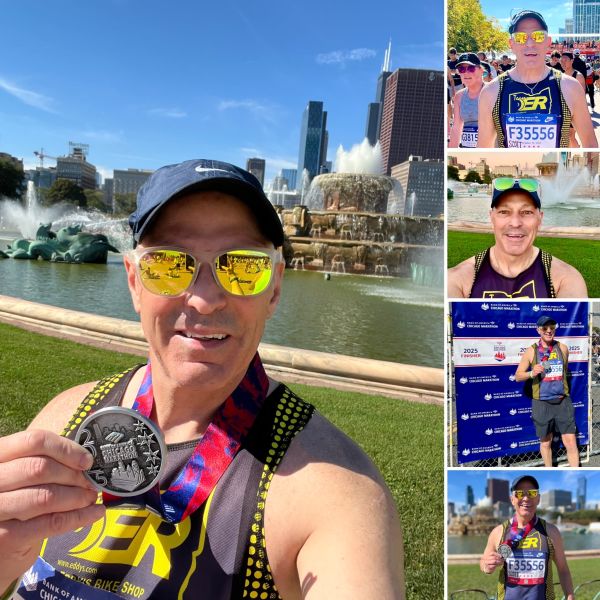
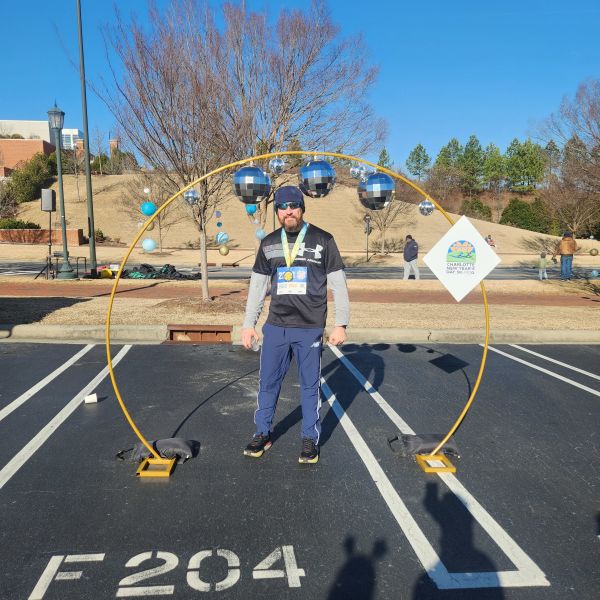
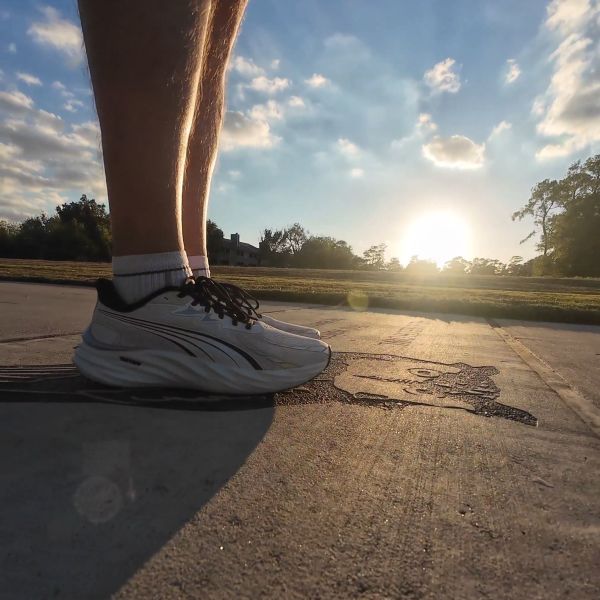
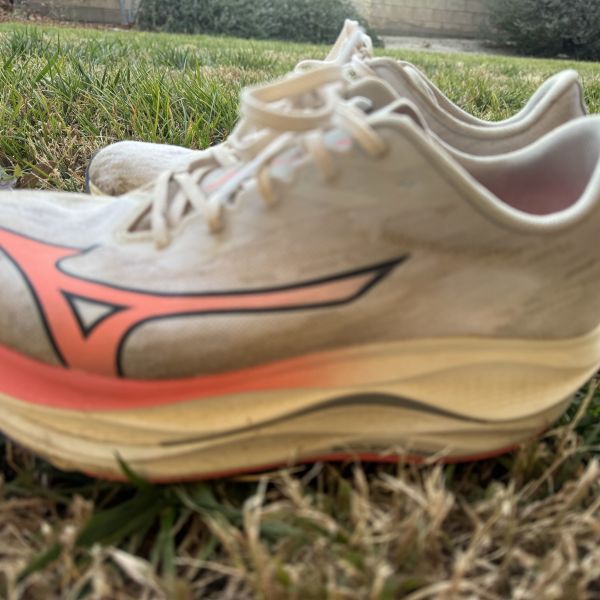
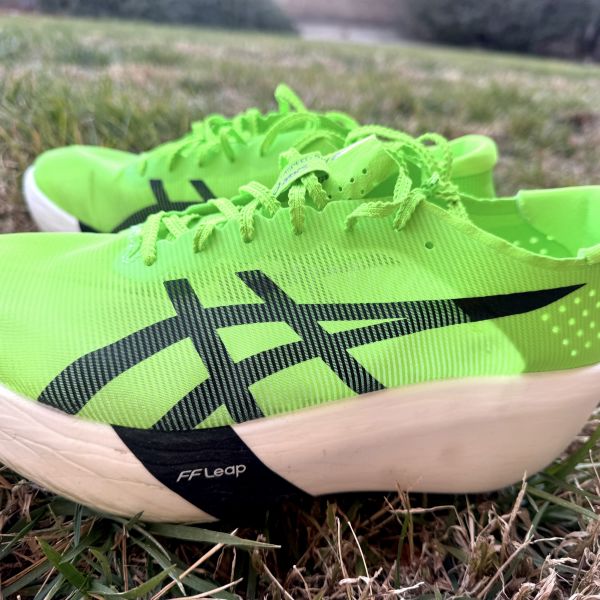
We Want to Give it to You!
